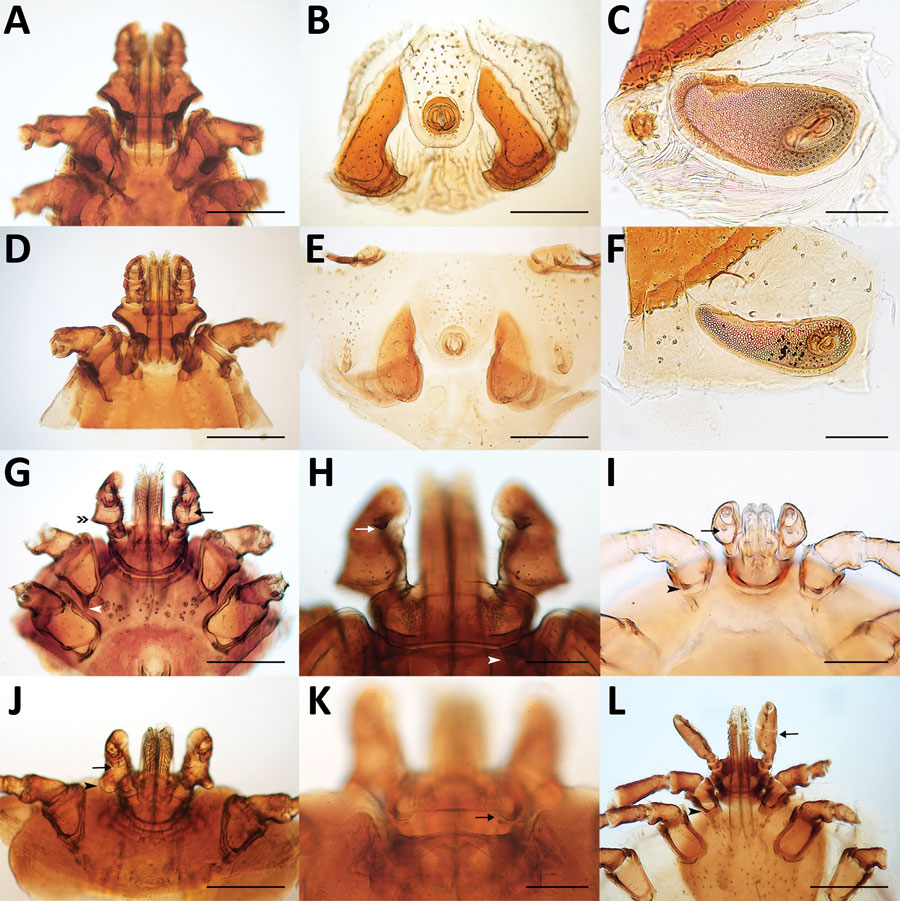Zoonotic Vectorborne Pathogens and Ectoparasites of Dogs and Cats in Eastern and Southeast Asia
Vito Colella

, Viet L. Nguyen, Do Y. Tan, Na Lu, Fang Fang, Yin Zhijuan, Jiangwei Wang, Xin Liu, Xinghui Chen, Junyan Dong, Wisnu Nurcahyo, Upik K. Hadi, Virginia Venturina, Kenneth B.Y. Tong, Yi-Lun Tsai, Piyanan Taweethavonsawat, Saruda Tiwananthagorn, Thong Q. Le, Khanh L. Bui, Malaika Watanabe, Puteri A.M.A. Rani, Giada Annoscia, Frédéric Beugnet, Domenico Otranto, and Lénaïg Halos
Author affiliations: University of Melbourne, Melbourne, Victoria, Australia (V. Colella); University of Bari, Bari, Italy (V. Colella, V.L. Nguyen, G. Annoscia, D. Otranto); Boehringer Ingelheim Animal Health, Lyon, France (D.Y. Tan, Na Lu, F. Beugnet, L. Halos); Guangxi University, Nanning, China (F. Fang); KangBao Pet Hospital, Guilin, China (Y. Zhijuan); Sapphire Veterinary Hospital, Shanghai, China (J. Wang); Meilianzhonghe Veterinary Referral Center, Beijing, China (X. Liu); Chongyisheng Veterinary Hospital, Chengdu, China (X. Chen); Nanjing Police Dog Research Institute, Nanjing, China (J. Dong); Gadjah Mada University, Yogyakata, Indonesia (W. Nurcahyo); Bogor University Indonesia, Jakarta, Indonesia (U.K. Hadi); Central Luzon State University, Nueva Ecija, Philippines (V. Venturina); Animal & Avian Veterinary Clinic, Yishun, Singapore (K.B.Y. Tong); National Pingtung University of Science and Technology, Pingtung, Taiwan (Y.L. Tsai); Chulalongkorn University, Bangkok, Thailand (P. Taweethavonsawat); Chiang Mai University, Chiang Mai, Thailand (S. Tiwananthagorn); Nong Lam University, Ho Chi Minh City, Vietnam (T.Q. Le); Vietnam National University of Agriculture, Hanoi, Vietnam (K.L. Bui); University Putra Malaysia, Selangor, Malaysia (M. Watanabe, P.A.M.A. Rani)
Main Article
Figure 2

Figure 2. Morphologic characteristics of ticks collected from dogs and cats in study of ectoparasites and vectorborne zoonotic pathogens of dogs and cats in Asia, 2017–2018. A–C) Male Rhipicephalus haemaphysaloides tick with hexagonal basis capitulum (A); typical sickle-shape adanal plates (B); and spiracular plate with comma shape, broad throughout its length (C). D–F) Male R. sanguineus tick with hexagonal basis capitulum (D); subtriangular adanal plates (E); and comma-shaped spiracular plate, elongated throughout its length (F). G) Female Haemaphysalis longicornis tick with enlarged lateral palp article II (double arrowhead), ventral spur on palp article III (arrow), and internal spur on coxa I (white arrowhead), relatively long and pointed. H) H. longicornis tick palp article III with retrograde dorsal spur (arrow) and cornua one third the length of the basis capitulum (arrowhead). I) Larva of Haemaphysalis wellingtoni palp article II slightly broader than article III, internal spur on coxa I (arrowhead) and strong and sharp ventral spur on palpal article III (arrow). J–K) Female Haemaphysalis campanulata tick with well-defined ventral spur (arrow) on palp article III, palp article II strongly salient laterally, with flared and bell-shaped posterior margin (arrowhead) (J) and with short cornua (arrow) (K). L) Ixodes sp. female tick with long palp (arrow) and short spur on coxa I (arrowhead). Scale bars in panels A, B, D, E, G, J, and L indicate 500 μm; scale bars in panels C, F, H, and K indicate 200 μm; scale bar in panel I indicates 100 μm.
Main Article
Page created: May 18, 2020
Page updated: May 18, 2020
Page reviewed: May 18, 2020
The conclusions, findings, and opinions expressed by authors contributing to this journal do not necessarily reflect the official position of the U.S. Department of Health and Human Services, the Public Health Service, the Centers for Disease Control and Prevention, or the authors' affiliated institutions. Use of trade names is for identification only and does not imply endorsement by any of the groups named above.
